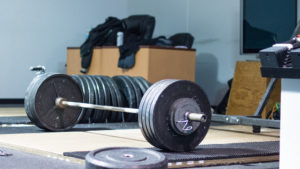A question I get a lot from parents, is whether their child (usually under 13) can safely lift weights and if they’ll benefit from doing so.
The answers are YES! and YES! Obviously there are caveats to this statement, like having an well designed program to follow, a safe environment in which to perform the program, and supervision.
There’s a myth that says children who lift weights will stunt their growth and cause injuries that could be prevented by simply not lifting weights. This is completely false, as long as my guidelines from the previous paragraph are followed. I do understand where this myth came from, however. If weights aren’t thoughtfully selected, and exercises aren’t performed properly an injury could occur to the epiphyseal plate (growth plate). This is an area of tissue near the end of long bones in children and adolescents that determines the future length and shape of those bones. So you can see why damage here could create problems and lead to this myth.
Getting Strong
Gaining strength and learning how to move well are things that children can greatly benefit from. The better an athlete or person moves, the less likely they are to injure themselves, both acutely and chronically. Learning how to squat, press, row, and hip hinge directly carry over to many sports as they are the base for pretty much all movements. You have to be able to control your body to perform at your best and keep yourself injury-free, and lifting weights helps to groove these efficient and safe movement patterns and adds strength through end ranges of motion.
Injury Prevention
Most hamstring injuries occur due to a lack of eccentric (lengthening) hamstring strength. You need eccentric hamstring strength to slow yourself down, stop, or change direction-all movements used in pretty much every sport. Eccentric strength is something that be easily developed by lifting weights as part of a well designed program.
Despite the benefits of strength training many parents are far more likely to put their child in some kind of “speed and agility” program. These generally involve some kind of jumping and sprints done haphazardly and coached by someone who is far from an expert. Don’t get me wrong, developing speed and agility is important for many sports, but these programs generally don’t deliver this.
What they more likely deliver is metabolic conditioning, which is fine but certainly not the same thing. Your kid will be tired and sweaty, but they won’t be improving their speed and agility. Also, depending on what the program entails they could actually be at a greater injury risk. Landing forces from countermovement and depth jumps can be 4.32 to 6.77 times bodyweight (Donaghue, Shimojo, Takagi, 2011). This can be problematic for children with no strength training experience as they likely do not have enough eccentric strength to repeatedly land safely.
Take Home Points
The weight room can be a great place for children to improve their athletic performance and health provided they have a well designed program to follow, a proficient instructor, and a safe place to train. They can reduce their injury risk and gain confidence in the weight room, which can have long term benefits for their lives outside of sports as well.
Sources
Photo:
“Loaded barbell” by Lance Goyke CC BY 2.0
Donaghue O, Shimojo H, Takagi H. 2011. Impact Forces of Plyometric Exercises Performed on Land and in Water. Sports Health. 3(3): 303–309

